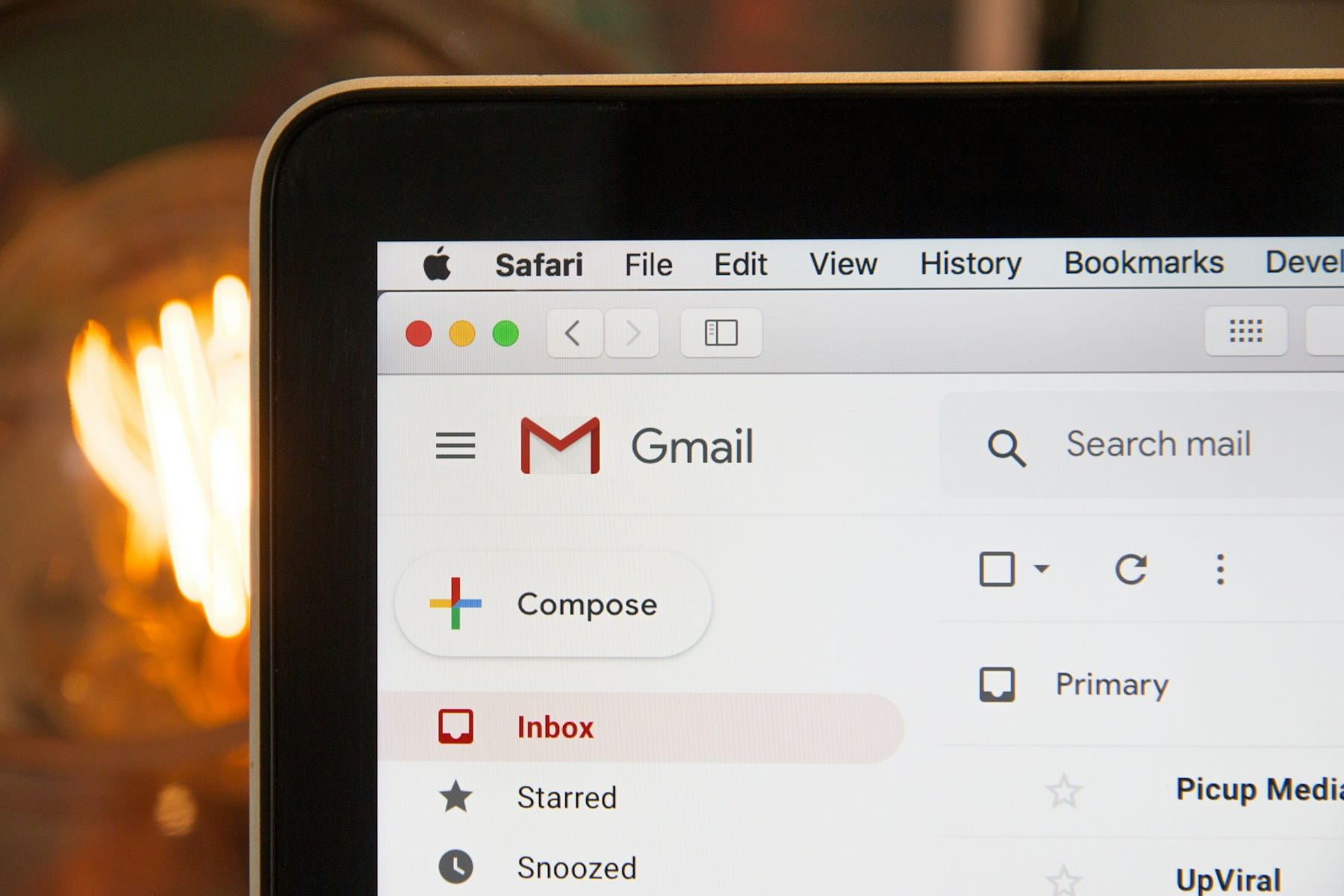The 5 Essential Email Marketing Metrics That Drive Results (And How to Optimize Them)
Email marketing has never been more powerful—or more essential for business growth. Recent research shows that over half of consumers (54%) made a purchase from an email in the past year, more than any other marketing channel. Combined with an average ROI of 36:1 and 72% of people preferring to receive promotional content through email, it's clear this channel isn't going anywhere.
However, as inboxes become increasingly crowded and customer expectations rise, marketers face mounting pressure to maximize ROI and refine their strategies for better performance.
To meet this challenge, you need more than raw data—you need actionable insights. That's where SelfMailKit's comprehensive analytics dashboard comes in. Our platform provides detailed campaign-level performance indicators by leveraging five critical metrics, measuring them against industry benchmarks and expert insights. To help you elevate your email performance further, SelfMailKit delivers strategic, personalized recommendations so you can assess your program, identify improvement opportunities, and make confident optimizations.
Let's examine each of these five essential metrics, understand why they matter, and explore practical tips to help you optimize results and amplify your email marketing impact.
1. Open Rate: Your First Impression Indicator
An email open rate represents the percentage of subscribers who open a specific email out of your total delivered emails.
Why it matters: Open rate helps assess the effectiveness of your subject lines and sender trustworthiness. However, with Apple's Mail Privacy Protection and similar privacy updates, it's no longer completely reliable as a standalone measure.
On average, you can expect open rates to range from 15% to 25%. Several factors influence this metric, including send timing, sender reputation, and most importantly, subject line quality.
Here are three proven strategies to boost your open rates:
Strategy #1: Create personalized subject lines Personalized subject lines help make emails feel relevant to recipients. Using their first name, location-specific references, or behavioral data can significantly encourage email opens.
Strategy #2: Keep subject lines concise Maintain concise and impactful subject lines. Keep them under 40 characters to ensure visibility across mobile and tablet devices where most emails are opened.
Strategy #3: Test subject line variations Experiment with different subject line approaches to discover what resonates with your audience. Implement A/B testing systematically to understand what drives engagement and what falls flat.
2. Click Rate: Measuring Content Engagement
Your click-through rate (CTR) measures how many people clicked a link within your email out of the total number of emails delivered.
Why it matters: Since email marketing aims to create engagement and encourage recipients to take action, your CTR indicates campaign success alongside your open rate.
Before optimizing click rates, it's essential to understand the difference between CTR and CTOR:
- Click-Through Rate (CTR) = Clicks ÷ Emails Delivered
- Click-to-Open Rate (CTOR) = Clicks ÷ Opens (This reveals how compelling your email content is after someone opens)
Benchmark to target: A CTR between 2% and 3% typically indicates successful campaign performance, demonstrating that your audience actively engages with your content.
Here are proven methods to improve your click rates:
Strategy #1: Implement strong call-to-actions (CTAs) Use clear, compelling, and persuasive CTAs to boost click rates. Ensure CTAs are prominently positioned, easy to understand, and aligned with your email content. Be specific and action-oriented (use phrases like "Download Now," "Shop the Sale," or "Reserve Your Spot" to convey the exact action you want readers to take).
Strategy #2: Ensure content is personalized and relevant Tailor emails by segment, behavior, or purchase history. Make content relevant through customer segmentation to create targeted campaigns for different demographics and locations, leveraging dynamic content to truly engage your audience. Research indicates that 40% of recipients feel frustrated by irrelevant content, making personalization essential for email marketing success.
Strategy #3: Incorporate visual elements for engagement Nobody enjoys reading dense text blocks, especially in their inbox. Adding visuals like photos, illustrations, GIFs, or videos doesn't just break up content—it draws attention, reinforces your message, and makes emails easier to scan and digest.
Emails that include visual elements can boost click-through rates by up to 300%. Ensure your images complement rather than compete with your content—every graphic should serve a purpose and support your message.
3. Delivery Rate: Ensuring Inbox Placement
Ensuring your emails reach your audience's inboxes is fundamental to achieving strong CTR and open rates. This is where your delivery rate becomes crucial. The delivery rate reflects the percentage of emails that successfully reach subscribers' inboxes (not spam folders or bounce back undelivered).
Why it matters: If your emails don't reach the inbox, nothing else can happen—no opens, clicks, or conversions.
Benchmark to target: SelfMailKit maintains industry-leading delivery rates above 99%, significantly exceeding typical standards through our robust infrastructure and deliverability optimization.
Implement these proven practices to improve your delivery rates:
Strategy #1: Authenticate your sending domain As of 2025, email authentication is mandatory—both Gmail and Yahoo require domain authentication for bulk senders. Without proper authentication, your emails face higher chances of being flagged as spam or blocked entirely.
Authentication involves configuring SPF (Sender Policy Framework), DKIM (DomainKeys Identified Mail), and DMARC (Domain-based Message Authentication, Reporting & Conformance) records. These protocols verify that you're a legitimate sender authorized to send from your domain.
Why authentication matters:
- Builds trust with mailbox providers like Gmail and Yahoo
- Improves deliverability, helping emails reach inboxes
- Protects your brand from spoofing and phishing attempts
Strategy #2: Maintain clean subscriber lists Regularly clean your subscriber lists by removing inactive and invalid email addresses to prevent high bounce rates. This proactive list hygiene directly impacts your sender reputation.
Strategy #3: Maintain consistent sending patterns Sending emails irregularly can negatively impact your sender reputation. A consistent, predictable schedule builds trust with subscribers and inbox providers while keeping your audience engaged and performance metrics stable.
By utilizing an industry-proven Email Service Provider like SelfMailKit, you significantly increase the likelihood of your emails reaching inboxes.
High deliverability is a shared responsibility. While SelfMailKit's powerful platform works behind the scenes to optimize inbox placement, your role—maintaining list health, sending valuable content, and adhering to regular schedules—is equally important for long-term success.
Email deliverability involves many factors influencing inbox placement. For comprehensive guidance on improvement strategies and avoiding common pitfalls, explore our detailed deliverability optimization guide.
4. Unsubscribe Rate: Monitoring List Health
The unsubscribe rate tracks recipients who have opted out of future emails. Some level of churn is natural in email marketing, and marketers should expect occasional subscriber opt-outs.
Why it matters: While some list churn is normal, high or rising unsubscribe rates may indicate issues with content relevance, sending frequency, or targeting accuracy.
Benchmark to target: Unsubscribe rates under 2% fall within industry norms according to comprehensive email marketing data.
To minimize churn and keep your emails welcome in inboxes, apply these proven techniques:
Strategy #1: Segment your audience effectively Tailor messages to specific groups based on interests, behaviors, or demographics. Sending content that resonates with different subscribers based on their preferences, actions, and location helps reduce opt-out rates significantly.
Strategy #2: Personalize your content strategy Show subscribers that you understand them. Small personalization touches significantly impact audience retention. Sending messages that speak directly to each subscriber helps them feel seen, valued, and understood by your organization. Use first names for personalization and leverage segmentation to deliver specific offers to different demographics.
Strategy #3: Implement email preference centers Give subscribers control over email types and frequency through a comprehensive preference center. This customizable approach enables your audience to control content types and delivery frequency. Rather than unsubscribing entirely, subscribers might opt to receive content more relevant to their interests—such as product updates or promotional offers—instead of general communications. This "opt-down" approach reduces unsubscribe rates by aligning communication with each subscriber's preferences and comfort level.
5. Bounce Rate: Maintaining List Quality
Bounce rate measures the percentage of emails that couldn't be delivered to recipients' inboxes. Keeping bounce rates minimal ensures future campaign success. There are two bounce types:
- Soft bounce: Temporary issue, such as a full inbox or server error
- Hard bounce: Permanent issue, like an invalid or non-existent email address
Ideally, all subscriber email addresses remain up-to-date and active. However, as subscriber lists grow, bounce rates typically increase. Best practice targets a bounce rate below 2%.
Here are effective methods to minimize bounce rates:
Strategy #1: Remove hard bounces immediately If an email returns undelivered, remove that address from your list immediately to maintain list hygiene and protect your sender reputation.
Strategy #2: Implement double opt-in processes Double opt-in is essential for reducing spam trap risks and preventing invalid addresses from joining your list. This verification step ensures only legitimate, engaged subscribers receive your emails.
Strategy #3: Use segmentation for list validation Strategic segmentation helps identify email address issues as you organize your list into groups, leading to fewer bounces and better overall list health.
Optimize Your Email Marketing with Data-Driven Insights
Tracking these five key email metrics—open rate, click rate, delivery rate, unsubscribe rate, and bounce rate—is crucial for maintaining a healthy, high-performing email program. These metrics provide measurable insights into how effectively your emails reach, engage, and retain your audience.
However, tracking alone isn't sufficient. To make meaningful improvements, you need to understand what the numbers mean and what actions to take next.
SelfMailKit includes comprehensive analytics and reporting features designed to help you evaluate and optimize email performance. Our platform provides clear performance ratings backed by data, focusing on four key areas:
- Engagement Analytics
- Deliverability Monitoring
- List Health Assessment
- Overall Performance Tracking
Our analytics also include practical recommendations to help you act on results, enabling campaign-by-campaign improvements with full visibility into what's working and where to adjust.
New to SelfMailKit? Get started today to experience advanced email analytics. Already using SelfMailKit? Access your dashboard now to gain deeper understanding of your email performance and optimize your efforts with our comprehensive analytics suite.
Additional Email Marketing Optimization Tips
Email marketing continues evolving rapidly, making regular review and refinement essential for keeping campaigns optimized and effective.
Here are additional best practices and resources to maximize your success:
Explore Advanced Testing Strategies Learn how to optimize email performance through systematic testing with detailed analytics and performance tracking.
Master Email Automation Discover how to leverage email remarketing to re-engage inactive subscribers and recover potential conversions through targeted campaigns.
Optimize Email Design Learn about email design best practices to create emails that not only look professional but also drive action across all devices and email clients.
Stay Current with Best Practices Regularly review drip marketing strategies and automated sequence optimization to ensure your campaigns remain effective and drive consistent engagement.
Build Better Email Campaigns with SelfMailKit
Tracking email marketing metrics effectively requires combining strategic insight with reliable technology. Understanding your performance data and knowing how to act on it provides the foundation, while the right platform ensures you can implement optimizations successfully.
SelfMailKit offers comprehensive analytics and infrastructure designed specifically for modern email marketing challenges. Our platform includes detailed performance tracking, advanced segmentation capabilities, deliverability monitoring, and optimization features that help teams understand and improve their email marketing results.
Whether you're launching your first email campaign or managing complex automation sequences for growing subscriber lists, SelfMailKit provides the analytics depth and reliability required for email marketing success. Our developer-friendly approach ensures seamless integration while maintaining the performance monitoring needed for sustainable growth.
Discover how SelfMailKit's analytics capabilities can transform your email marketing with infrastructure designed for modern marketing teams. Learn more about our comprehensive email marketing platform and why SelfMailKit is different from other email solutions.






